How to choose the best eggs to hatch
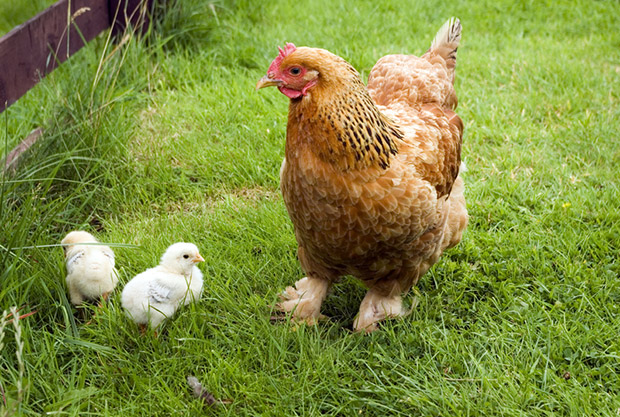
If you want happy, healthy chicks, it starts with choosing the best eggs.
Words: Sue Clarke & Nadene Hall
It’s the fun question that appears to have no answer: what came first, the chicken or the egg?
Genetic specialists say the research proves the answer is the egg. Professor John Brookfield of the University of Nottingham says genetic material doesn’t change during an animal’s life. The creature that evolved into what we know today as a chicken would have first existed as an embryo inside an egg. Its parents would have been very close to what we know as chickens, but not quite (known as ‘proto-chickens’).
The living organism inside the eggshell would contain the same DNA as the chicken it would eventually become.
“Therefore, the first living thing which we could say unequivocally was a member of the species would be this first egg, so I would conclude that the egg came first.”
The best eggs to hatch
You can let nature takes its course and allow a rooster and hen to naturally get together, or you can make the decision for them and choose a good pair. If you want new genes, breeders around the country sell hatching eggs, allowing you to hatch and raise purebred stock for an economical price.
Fertility option 1: Eggs au natural
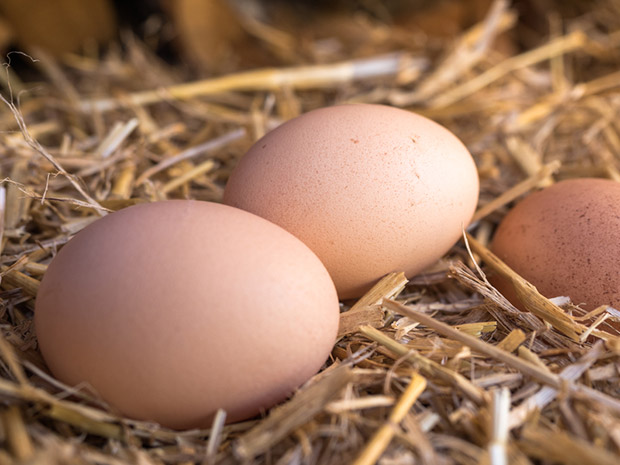
A hen’s eggs will be fertilised about 36 hours after the first mating.
Assuming the hen hasn’t mated with another rooster beforehand, the yolk moving through the oviduct at the time of mating won’t be fertilsed. Sperm need up to 24 hours to swim up the oviduct and reach a special storage area inside the hen. The hen then releases a small amount of sperm to fertilise each yolk as it starts its journey down the oviduct.
Sperm remains viable inside the hen for about a week after mating takes place. If you change from one rooster to another, you need to wait 7-10 days before you can be sure you’re getting eggs fertilised by the new rooster.
Collecting fertile eggs
• Collect potentially fertile eggs regularly – ideally three times a day – and write the date on them in pencil.
• Sacrifice eggs for 2-3 days after mating to check if they’re fertilised, so you can be confident your rooster is doing his job. Wait until at least 12 hours after the egg is laid. Crack it open gently onto a saucer, and then carefully turn the yolk until you find the white germinal disc. Fertile eggs have a small, fuzzy, white, round, donut-like spot in the yolk. An unfertilised egg will have a bright white dot with defined edges. Check every day for a few days for consistency.
• For peak hatchability, collect eggs over 6-8 days and store them in a cupboard or somewhere with a constant temperature between 10-18°C (ideally 15-16°C) – use a thermometer to check. Don’t put them in the fridge.
• Use an egg tray or carton and store eggs pointy-end down. Tip the tray at a 45° angle by raising one edge one day, then the other way the next day, and so on. This helps to keep the yolk centred in the white.
• A hen can only incubate the eggs her body will cover. If you’re using bantams, most can cover about 6-8 full-size eggs. The maximum for a large hen would be 14-16 eggs. If a hen tries to incubate too many eggs, the ones on the outside will be too cold to develop.
The best age for a fertile egg
Fresh isn’t best when it comes to getting a good hatchability rate. Eggs less than 24 hours old when incubation commences don’t have as high a hatchability rate as those that have at least a few hours to cool down first.
However, stale isn’t best either. Hatchability begins to decline by about 1% per day for every day after 7 days. After three weeks (and then three weeks of incubation), average hatchability can be less than 50%.
Ideally, set eggs under a broody hen or in an incubator within 7-10 days of laying.
Don’t be sucked in by this rooster
You may find people advertising that they’re selling a Hyline or Shaver rooster. They do exist but are very rare. A true Hyline or Shaver male chick may slip through the sexing process at the hatchery and be sold to a commercial farmer or professional rearer.
However, people who say they’re selling them often mean they have a rooster with a hybrid mother and another breed as the father. A Hyline or Shaver cross will improve the egg production of his daughters if he’s mated over a good layer, but they won’t match the output of commercially-bred Hyline or Shaver hens.
If you want a guarantee you’re getting a Hyline or Shaver rooster, the only way would be to ask one of the two commercial hatcheries in NZ if they would sell you one (or a few) as day-old chicks.
Even then, you’re not going to produce hens that will lay as well as commercial hybrids. This is because they are an incredibly complex mix of genetics from specially-bred female lines mated to specially-bred males.
Fertility option 2: Hatching eggs
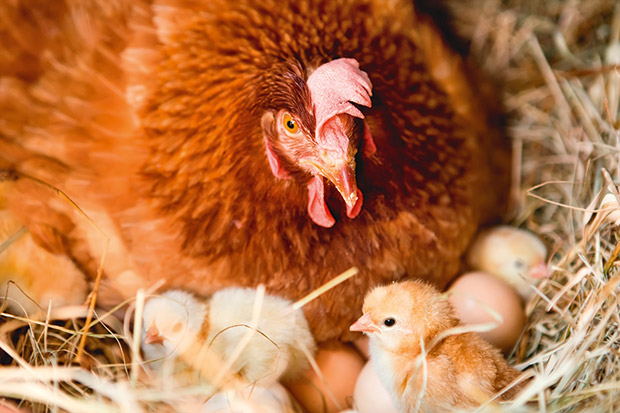
Hatching eggs are a great way to introduce a new breed or bloodline into your flock.
The chicks that hatch will naturally develop an immune response to diseases on your property, compared to chicks you buy. Brought-in chicks may also carry diseases you don’t have onto your block.
Ask the breeder about the fertility rate and potential hatchability of the eggs you want to buy:
• fertility should be 96-98%;
• hatchability is usually 4-6% below the fertility rate (due to losses during incubation).
Different breeds have higher or lower hatchability rates. Storage, transport, and incubation fluctuations can also influence the final hatch percentage.
4 tips to finding a good breeder
You want someone with:
• a good reputation for high hatchability;
• birds that are up to the breed standard in looks;
• birds with high fertility;
• a clean, well-managed property;
• healthy-looking birds.
If you want to invest time and effort in purebred heritage breeds, it’s worth attending a poultry show. Shows take place in autumn and winter around the country. Talk to breeders and get their advice on bloodlines and breeding.
Ask about the health history of the birds, eg vaccination status, worming regime etc.
How can eggs all hatch on the same day?
A hen can only lay one egg a day, so evolution has come up with a brilliant way to ensure a clutch hatches on the same day.
Once laid, a fertile egg cools down over about six hours. Its internal temperature reduces from around 40°C to 12-20°C, and development of the embryo ceases. It can then wait in suspended animation for 10 days or more until it’s triggered into growing when the egg temperature goes above 26°C.
This means a hen can lay an egg a day for 5-10 days to create a ‘clutch’, but she doesn’t need to start incubation (and raise the temperature above 26°C) until she finishes laying the last one. All her chicks will then hatch within 24 hours, around 21 days from when she starts sitting.
If eggs are left in a nest on a hot day or under a broody hen and stay at around 35-40°C, embryo cells will continue to grow past the stage where development can be suspended. Any subsequent cooling then kills them.
In this case, the egg will appear to be unfertilised if you candle it. If you crack it open after the other eggs have hatched, you might also think it was unfertilised. However, it’s possibly a very early death that’s not detectable.
CAN YOU HATCH A DOUBLE YOLKER?
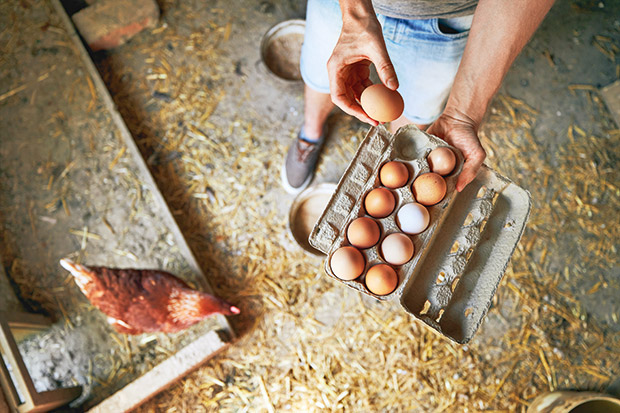
A double-yolker is an egg created when two yolks are released simultaneously by a hen’s reproductive tract. They’re more commonly produced by younger hens, as their bodies are still settling into a 24-26 hour laying cycle.
There are rare cases of twin chicks hatching, but usually either one chick will suffocate in the shell while its sibling is hatching, or both die as they’re unable to orientate themselves to the air cell for pipping. Chicks might live if you help them out of the shell, but it’s risky.
If you have a bird that persistently lays double yolkers, don’t breed from her. Double yolk eggs are more likely to cause prolapses, which are very painful, and can kill a hen.
Pity the hens that have laid some of the world’s largest eggs, weighing between 195-200g in various countries. That’s more than three times the weight of the average single yolk egg (58g).
WHAT IS HATCHABILITY?
Not all eggs you incubate will hatch. ‘Hatchability is the term used to express the percentage of chicks that hatch from the eggs you set under a hen or put in an incubator.
Breeders always hatch eggs for their own needs first. This gives them an approximate hatchability rate of eggs from particular pairings of hens and roosters. Assuming good incubation, this means they can tell you the approximate number of chicks to expect.
Chicks hatched divided by eggs set x 100 = hatchability (as a percentage)
8 chicks from 9 eggs = 88.8% hatchability
5 chicks from 9 eggs = 55.5% hatchability
5 EGGS YOU SHOULD NEVER INCUBATE
• extremely large or small eggs, which have a low hatching rate;
• unnaturally-shaped eggs, which have a low hatching rate;
• weak-shelled eggs, which are more prone to breakage, bacteria, and mould;
• eggs with a poor-quality interior, eg meat spot, blood spot, uneven colour of yolk – ‘candle’ eggs (shine a bright light through them in a darkened room) to check for flaws;
• dirty eggs, which are likely to be contaminated. Use only clean eggs for hatching or ones where you can use a dry paper towel to remove superficial dirt or manure. An egg’s shell is porous, and bacteria can be forced through the pores by rubbing or washing.
IT’S FRIZZY
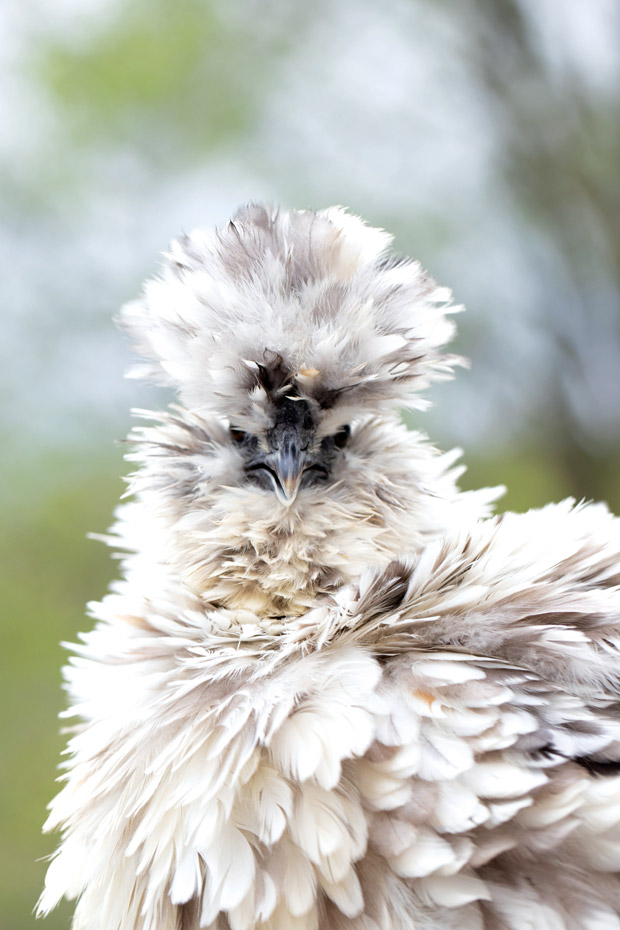
A frizzle can pop up in any breed. It’s a genetic aberration that makes the feathers curl rather than lay flat. It’s best to mate a frizzle parent with a non-frizzle to get more frizzles. If both parents are frizzles, a percentage of chicks can hatch with few or no feathers.
Love this story? Subscribe now!
 This article first appeared in NZ Lifestyle Block Magazine.
This article first appeared in NZ Lifestyle Block Magazine.
